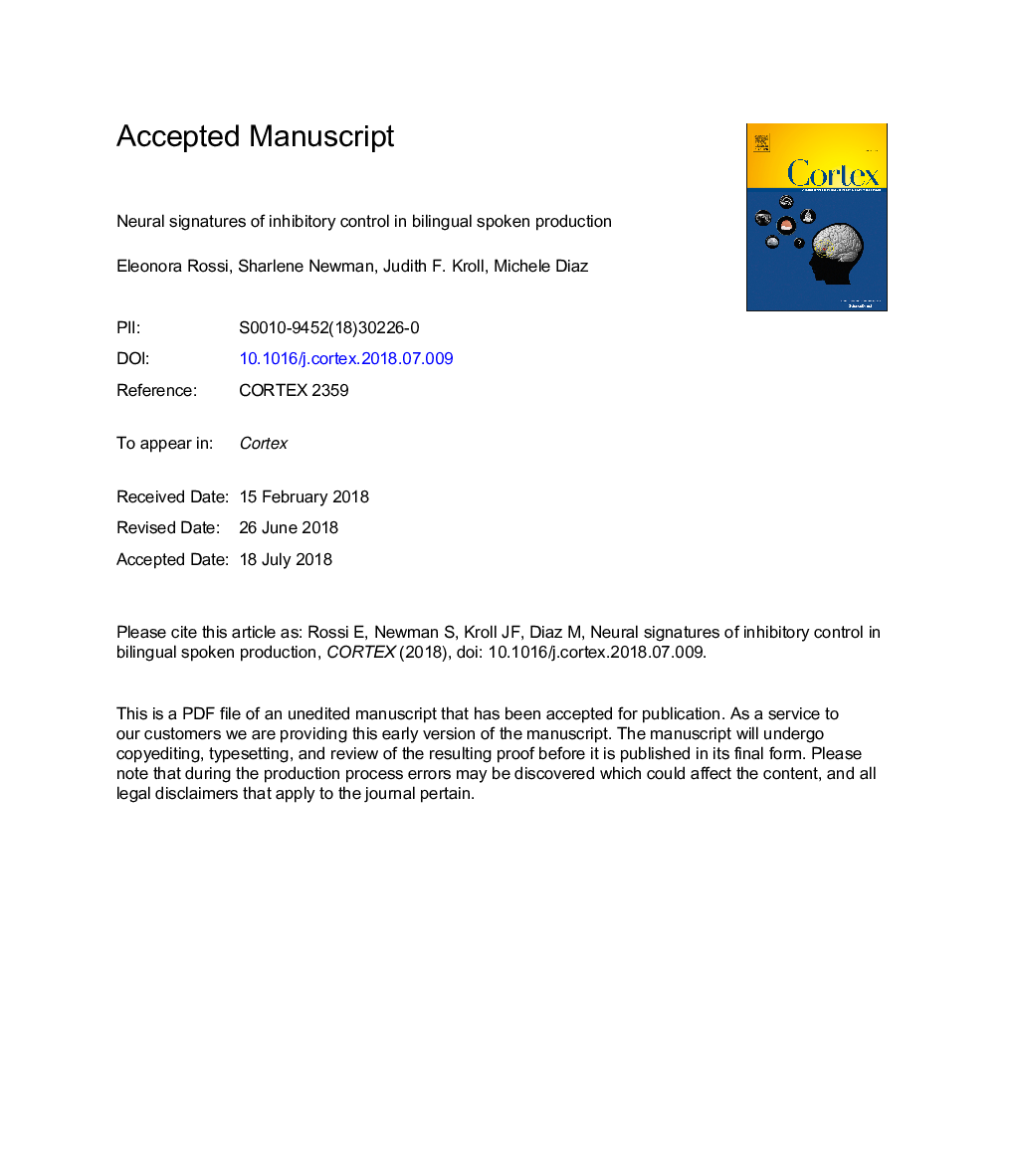| کد مقاله | کد نشریه | سال انتشار | مقاله انگلیسی | نسخه تمام متن |
|---|---|---|---|---|
| 7311200 | 1475425 | 2018 | 46 صفحه PDF | دانلود رایگان |
عنوان انگلیسی مقاله ISI
Neural signatures of inhibitory control in bilingual spoken production
ترجمه فارسی عنوان
امضاهای عصبی کنترل مهار در تولید گفتاری دو زبانه
دانلود مقاله + سفارش ترجمه
دانلود مقاله ISI انگلیسی
رایگان برای ایرانیان
کلمات کلیدی
دو زبانه، تولید زبان، کنترل مهار، مهارت،
موضوعات مرتبط
علوم زیستی و بیوفناوری
علم عصب شناسی
علوم اعصاب رفتاری
چکیده انگلیسی
Bilinguals activate both languages when they intend to speak even one language alone (e.g., Kroll, Bobb, & Wodniekca, 2006). At the same time, they are able to select the language they intend to speak and switch back and forth between languages rapidly, with few production errors. Previous research utilizing behavioral (Linck, Kroll, & Sunderman, 2009) and neuroimaging techniques (ERPs and fMRI; Guo, Liu, Misra, & Kroll, 2011; Misra, Guo, Bobb, & Kroll, 2012) suggest that successful bilingual speech production is enabled by active inhibition of the language not in use. Results showing an asymmetric switching cost for the L1 compared to the L2 (with a larger cost -reflected in longer naming latencies-when switching from the L2 to the L1) have been taken as evidence that the L1 (usually the dominant language for bilinguals who learned their second language later in life) may need to be inhibited when speaking in the L2. However, there is still little research on the scope of this inhibitory process. The goal of this event-related functional magnetic resonance imaging study is to understand how the recruitment of neural areas implicated during bilingual language processing are shaped by the scope of language use. The results show that bilinguals engage a wide functional control network that is hierarchically engaged in local control for single lexical items, but extends further to the broader semantic level, and finally to the whole language. This functional network is modulated by proficiency in the L2.
ناشر
Database: Elsevier - ScienceDirect (ساینس دایرکت)
Journal: Cortex - Volume 108, November 2018, Pages 50-66
Journal: Cortex - Volume 108, November 2018, Pages 50-66
نویسندگان
Eleonora Rossi, Sharlene Newman, Judith F. Kroll, Michele T. Diaz,
